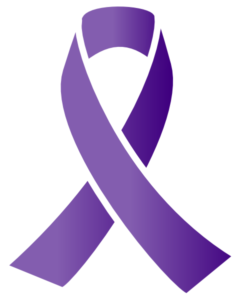
Community Benefit
Education and awareness are foundational programs to which our efforts are directed. One in ten people have had a seizure in their lifetime. In spite of the fact that one in 26 people will develop epilepsy in their lifetime and that epilepsy is the fourth most common neurological condition, public knowledge remains scanty. Ignorance is a breeding ground of misinformation and prejudice. Consequently, people with epilepsy may not fully understand what they can do to improve their health outcomes. Misconceptions on the part of others create difficulties in school, work and social relationships, all of which can lead to increased loneliness, isolation and depression. Ignorance can be dangerous, as when seizure first aid is incorrectly applied. In its worst manifestation, it can be fatal, as in the case of the Ontario man who was shot by police who didn’t recognize his actions as a possible seizure.¹
Activities and Delivery
1. In 2019 we reached 1590 individuals through various presentations, webinars, workshops and events. We work hard to maximize understanding by tailoring each presentation to the needs and level of each audience. Our talks meet or exceed best practice guidelines for educational presentations established by the Canadian Epilepsy Alliance.
a) Seniors – Epilepsy in seniors is higher than in any other age group. Seniors who attend our workshops learn about the different type of seizures experienced by the elderly, and when they should seek medical attention.
b) Camp Counselors – We provide the first aid training for counselors at Zajac Ranch. In addition to seizure first aid, they learn about seizure triggers, how to avoid seizures, and the effects of epilepsy on daily living, sleep and behavior.
c) Teachers and Education Assistants – The largest segment of our audience this year was to educational professionals: teachers, education assistants, and EA’s in training. Bringing knowledge of epilepsy to those who work in education is one of our priorities because research has shown that approximately 48% of children with epilepsy meet the criteria for a learning disorder.²
d) Classroom Presentations – Bringing awareness to children is especially important. When children are taught what epilepsy is and that having epilepsy is no different than having any other medical condition, then fear, teasing and bullying decrease.
2. Valuable educational material is provided through the publication of our comprehensive Resource Binder and by our website at www.esebc.ca
3. We promote awareness of epilepsy to dispel myths and decrease stigma caused by ignorance. We encourage volunteer efforts to help in this cause by providing information about epilepsy and awareness materials.
Community Support
Our workshops are always well received. Apart from children in school, all participants fill out evaluation forms. On a scale of one to ten, the overall average rating for quality of information is 9.4. When asked what the most important thing learned in the workshop, the two most frequent answers concern seizure first aid and seizure recognition.
¹https://www.thestar.com/news/crime/2014/06/03/siu_clears_officer_who_shot_michael_macissac_to_death.html
²Fastenau, P. et al, Academic Underachievement Among Children with Epilepsy, Journal of Learning Disabilities, 2008 41 (3) 195-207
